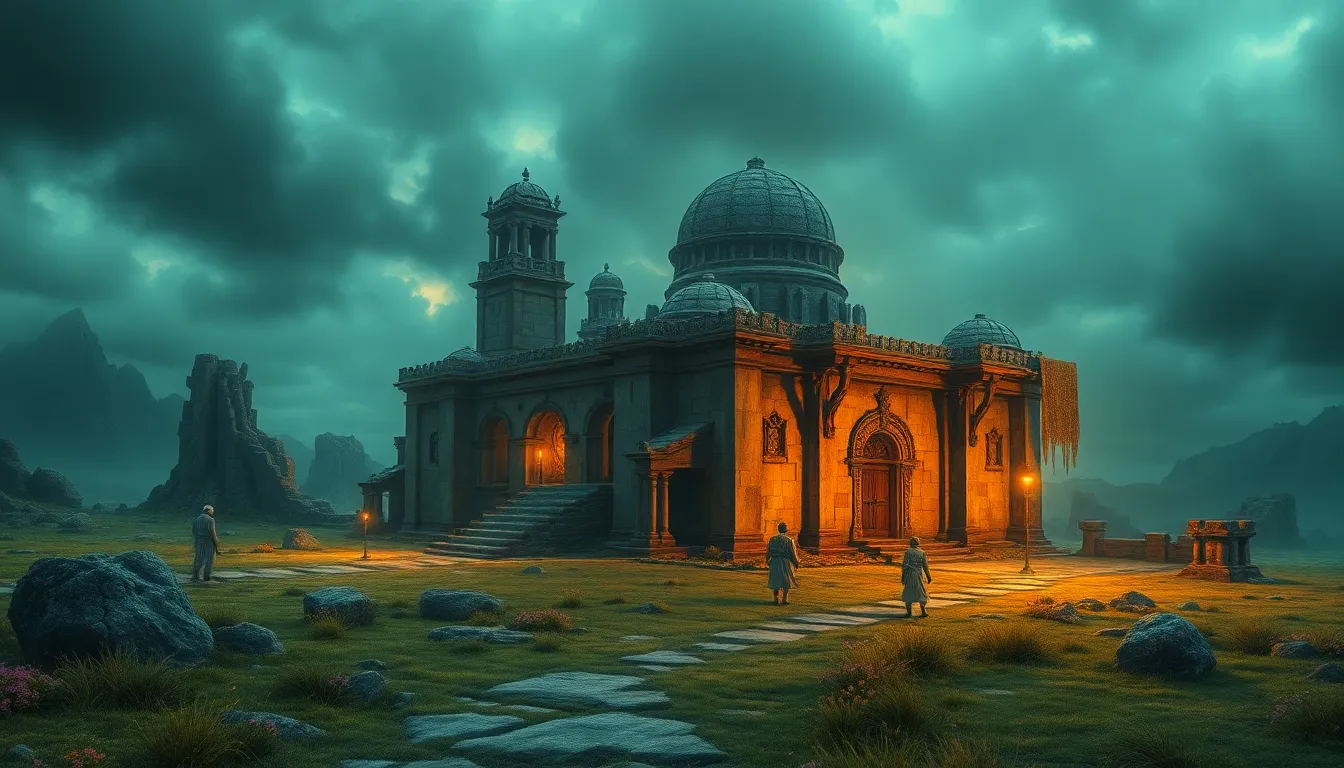Whispers of the Past: Sacred Sites Steeped in Legend
1. Introduction to Sacred Sites and Their Significance
Sacred sites are locations that hold profound spiritual significance for a particular culture or religion. These places often serve as focal points for worship, pilgrimage, and community gatherings. They can range from ancient ruins to natural formations, embodying the beliefs and histories of the people who revere them.
Legends play a crucial role in shaping the cultural heritage of communities. They provide a narrative framework that connects generations, linking the past with the present. This article will explore sacred sites around the world, delving into the legends that enrich their significance and draw visitors seeking to connect with something greater than themselves.
2. The Role of Legends in Shaping Sacred Spaces
Legends contribute to the cultural identity of a community by embodying its values, beliefs, and historical experiences. They serve to explain the unexplainable, offering insights into the spiritual world and the relationship between humanity and the divine.
The interplay between history and mythology is evident in many sacred sites. Legends often emerge from historical events but evolve over time, intertwining with cultural narratives. For instance, the stories surrounding a site may change as new generations interpret them through their own lens.
Examples of legends that define specific locations include:
- The legend of King Arthur and Camelot, which enriches the cultural significance of Glastonbury Abbey in England.
- The tales of the ancient Greek gods that are interwoven with the ruins of the Acropolis in Athens.
- The stories of the ancestors of the Native American tribes that give sacred meaning to places like Bear Butte in South Dakota.
3. The Ancient Ruins of Machu Picchu: A Sanctuary of the Inca
Machu Picchu, located in the Andes Mountains of Peru, is one of the most iconic archaeological sites in the world. This Incan citadel, built in the 15th century, is often referred to as the “Lost City of the Incas.” It served as a royal estate and a religious site devoted to the Inca sun god.
Legends surrounding Machu Picchu speak of its construction by the Inca emperor Pachacuti, who sought to create a paradise on earth. According to local lore, the site was chosen for its natural beauty and strategic location, believed to be a place where the heavens met the earth.
Today, Machu Picchu continues to hold spiritual significance for many indigenous people, who view it as a sacred space that connects them to their ancestors and their cultural heritage.
4. Stonehenge: The Enigmatic Circle of Stones
Stonehenge, located in Wiltshire, England, is a prehistoric monument characterized by its massive stone circle. Its exact purpose remains a mystery, leading to various theories about its origin and function, including its role as an astronomical observatory or a religious site.
Legends abound regarding Stonehenge, including tales of giants who built the stones or druids who used the site for rituals. These stories contribute to its enigmatic aura, drawing visitors from around the globe.
In modern times, Stonehenge continues to be a site of spiritual gatherings, particularly during the summer solstice when people come to celebrate the longest day of the year.
5. The Pyramids of Giza: Monuments of the Gods
The Great Pyramids of Giza are among the most recognized and studied archaeological sites in the world. Built as tombs for pharaohs, these monumental structures reflect the ancient Egyptians’ beliefs surrounding death and the afterlife.
Myths about the pharaohs, such as the belief in their divine nature and their journey to the afterlife, are deeply intertwined with the pyramids. The legends surrounding these monumental tombs continue to captivate visitors and inspire awe.
Today, the Pyramids of Giza serve as a reminder of the ancient civilization’s grandeur and the enduring fascination with their mysteries.
6. The Sacred Grove of the Druids: Nature’s Altar
In ancient Celtic culture, sacred groves held a special place as sites of worship and spiritual significance. These groves were often seen as nature’s altars, where the Druids performed rituals and communed with the divine.
Legends of the Druids emphasize their deep connection to nature and the belief that trees were sacred beings. Oak trees, in particular, were revered for their strength and longevity.
In recent years, there has been a revival of Druidic practices, with modern practitioners returning to sacred groves for ceremonies that honor ancient traditions and the natural world.
7. The Temples of Angkor Wat: A Fusion of Heaven and Earth
Angkor Wat, located in Cambodia, is the largest religious monument in the world and a UNESCO World Heritage site. Originally constructed as a Hindu temple in the 12th century, it later transformed into a Buddhist temple, reflecting the region’s rich cultural tapestry.
Legends surrounding Angkor Wat speak of its divine connection, with stories of celestial beings participating in its construction. The intricate carvings depict scenes from Hindu epics, illustrating the temple’s spiritual significance.
Today, Angkor Wat remains a vital symbol of Khmer culture and spirituality, attracting millions of visitors each year who seek to understand its history and religious significance.
8. The Isle of Skye: Land of Faeries and Myths
The Isle of Skye, located off the west coast of Scotland, is renowned for its breathtaking landscapes and rich folklore. The island is steeped in legends of faeries and mythical creatures, with stories that have been passed down through generations.
Local legends include tales of faerie forts and enchanted glens, where magical beings are said to dwell. These stories have a profound impact on the island’s cultural identity and influence tourism, as visitors seek to experience the enchantment of Skye.
Furthermore, the myths and legends of Skye continue to inspire artists, writers, and musicians, creating a vibrant cultural tapestry that honors the island’s heritage.
9. The Impact of Modernization on Sacred Sites and Legends
As the world modernizes, sacred sites face numerous challenges, including environmental degradation, commercialization, and the risk of losing cultural significance. Balancing preservation with tourism is a critical issue for many of these sites.
Efforts are underway in various regions to protect sacred sites and keep their legends alive. This includes:
- Implementing sustainable tourism practices that minimize environmental impact.
- Engaging local communities in preservation efforts and cultural education.
- Promoting awareness of the cultural significance of these sites to visitors.
10. Conclusion: The Enduring Power of Sacred Sites and Legends
The whispers of the past resonate through sacred sites around the world, where legends intertwine with history and spirituality. These places serve as reminders of our shared cultural heritage, inviting us to explore the narratives that shape our understanding of the world.
As we navigate the complexities of modern life, the enduring power of sacred sites and their legends offers a connection to something timeless—a reminder of the human spirit’s quest for meaning, belonging, and transcendence.



